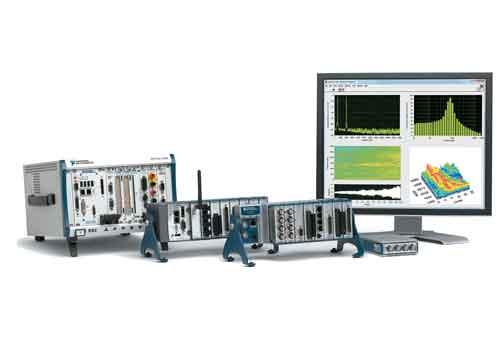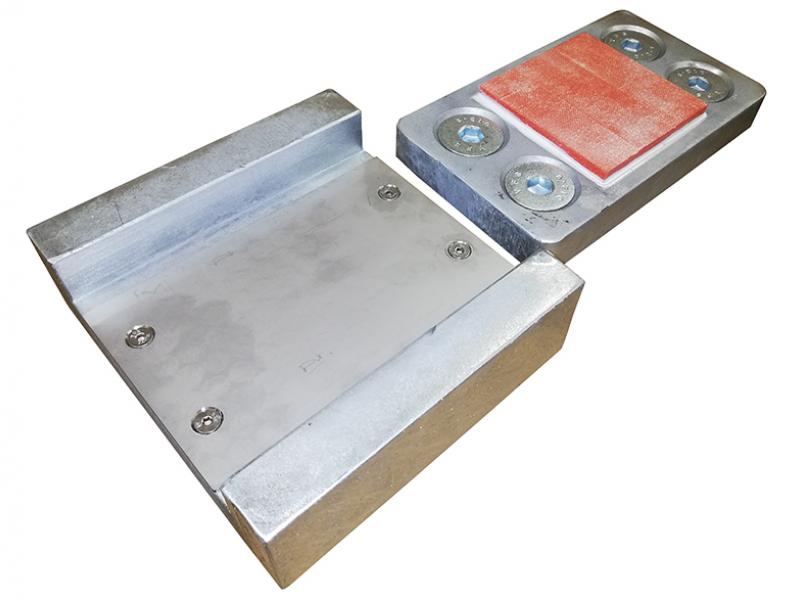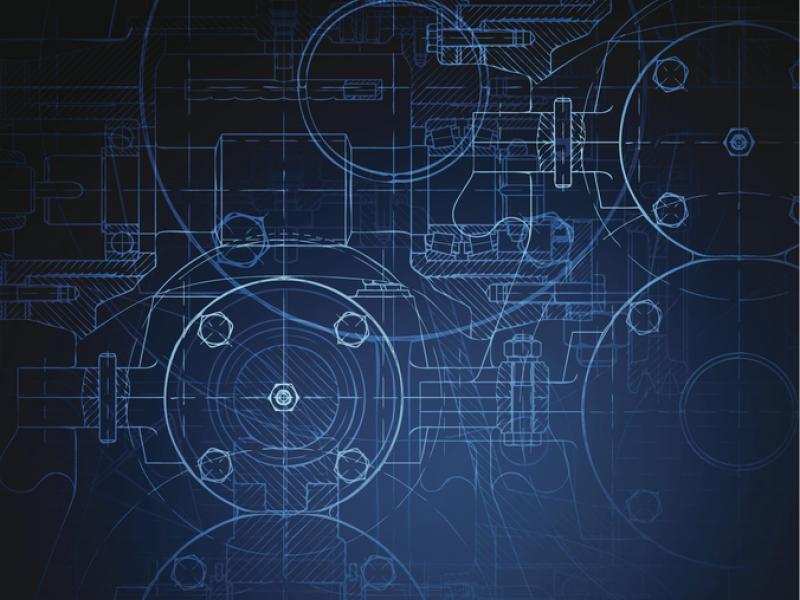Iron manufacturing plants supply the steel industry with molten iron and raw materials. Coke, a solid carbon fuel and carbon source used to melt and reduce iron ore, and sinter, also needed for blast furnace iron manufacturing, are supplied by the coke furnace and the ore-sintering plant, respectively. The ore-sintering plant produces sinter as the raw material for blast-furnace iron making. During the primary processing procedure, the raw materials – iron ore, flux (such as limestone), and coke breeze – are made into pellets by adding water to the mixing cylinder and mixing evening, and then sent in their specified mixture ratios to the sintering machine for calcination. After the agglomerated sinter has been crushed and filtered, the five to 50mm sinter pellets are sent to the blast furnace as the primary raw material for iron making.
Difficulties encountered in the sintering plant
The sintering permeability (JPU) is an important indicator for testing the agglomeration status during the agglomeration process. The permeability status during the manufacturing process is ultimately determined by the ventilation quantity of the air exhaust system. In the air exhaust system, the sintering machine comes into the most direct contact with the raw materials and is the easiest location for gas leaks to occur.
The sintering machine structure is made up of many sintering pallets with sealing devices located in front and behind each one. These devices come into contact with a hard metal plate at the bottom of the pallet beam and the side of the bellows. To prevent rubbing against the sharp sintering charge during the sintering process. (which results in scratching and air leakage, expansion space is required. If the sintering machine pallet has a leak), ventilation decreases, which causes difficulties in forming the pellets and decreases sinter output.
An intact sintering pallet uses less electricity and has a lower system fan load because it does not have any leaks. A pallet with a leak requires the fan to rotate at a higher speed to maintain a certain amount of ventilation, so the motor driving the fan provides a higher drive current and wastes more energy. To increase the productivity of our sintering plant, we needed an effective way to test for the air leakage sources and analyse the leakage data as the basis for regular overhaul and replacement of the sintering pallets.
Past methods for leakage testing
In the past, we used manpower to perform air leakage tests during the sintering machine operations. Under conditions where a lot of dust and noise (approximately 90 to 110dB) were present for extended periods of time, personnel had to make judgments based on what they could see and hear. However, tracing the source of a leak can be very difficult because leaks can occur at different points such as the charge level or the pallet. In addition, the degree of noise made by the leak is not necessarily related to the amount of air leaked. It is difficult to judge if a leak is serious by simply listening to the leak. Moreover, manual test results are difficult to quantify and record and cannot be used as a reliable reference for sintering pallet overhaul.
To increase the test rate and prevent health risks to personnel under extended exposure to these poor working conditions, we wanted to establish an automated air leak testing system that allows personnel to conduct immediate testing and monitoring of the air leak status of all sintering pallets by operating the system in an electrical room. We also wanted to use this system to carry out signal analysis and data recording as the basis for future sintering pallet overhauls.
The value of information technology (IT) lies in the ability to analyse problems qualitatively and quantitatively to visualise the problem. To establish an air leakage testing system, we needed to know how to identify the air leak, how to identify the nature of different leaks and quantify the extent of their effect, and how to select the pallets most in need of maintenance based on considerations of planned maintenance and work capability.
Developing a solution
Before we chose a signal acquisition and analysis platform, we considered factors such as the usability of the platform programming language, computation capability, hardware communication, and long-term reliability. NI provides a variety of reliable, modular hardware that targets each different measurement need and pairs LabView with the various toolkits. With this solution, we quickly developed a highly flexible, highly integrated customised system that fully met our needs and considerations. This system combines a sound array, radio-frequency identification (RFID) technology, and the NI PXI platform to provide an excellent solution for an automated air leakage testing system.
We developed regulations for optimised testing using an acoustic pressure microphone based on air noise to test the pallet leakage status. At the same time, we used an array framework to fully test the leakage status of each part of the pallet, coupled with an NI PXI chassis, an NI PXI-8106 embedded controller, and an NI PXI-4472 dynamic data acquisition (DAQ) module to collect data. We used LabView as the development platform to accelerate the feasibility of inspection, verification, and the implementation method as well as to test the stability of the system. By providing immediate pallet leakage information and proper maintenance, we saved energy, reduced carbon emissions, increased production, and increased product quality.
Test results
We installed the complete automated test system in our top sintering plant to test and record the leakage status of each pallet. After repairing the 20 pallets with the most serious leaks based on the measurement data, we acquired favorable results. The average production quantity prior to periodic repairs was 6205 tons per day; after periodic repairs, the average output was 6292 tons per day, an increase of approximately 87 tons per day and an output rate increase of 0.65 percent.
Because the sintering pallet system operates 24 hours per day – except during periodic repairs – we repaired only 20 pallets and markedly increased the output. While maintaining a fixed output, decreasing the leakage of the sintering pallets with the intention of increasing effective ventilation can decrease the load on the sintering pallet fan and thereby decrease the propulsion current needed by the propulsion fan motor.
The energy expended prior to repairs was 3282 kWs/h compared with 3245 kWs/h expended after repairs, resulting in an average annual savings of approximately ¥ 540,000 (more than $5,500 USD) per year in electrical costs. Throughout the entire sintering process, each kilowatt-hour produced 0.637kg of carbon dioxide; after using the system, the carbon dioxide discharge amount decreased by approximately 198 tons per year. Moreover, low air leakage increases the percentage of passing sinter. Thus, the amount of sinter that needs to be recovered decreases, which reduces recovery costs and avoids power costs incurred by resintering.
Moreover, the sintered ore is the primary raw material for blast furnace molten iron. When an inadequate quantity of sintered ore is provided for the blast furnace, we have to externally purchase coking coal pellets as a substitute for the raw material. In the past, the sintered ore-to-pellet ratio used during the smelting process was approximately 78 to 22 percent. After conducting the periodic repairs, the amount of sinter provided by the sintering plant increased markedly, and the sintered ore-to-pellet ratio has reached 82 to 18 percent. We calculated that the increased output efficiency of using sintered ore instead of pellets is approximately ¥ 18 million per year. Furthermore, we improved the combustion efficiency using sintered ore as the raw material over pellets and increased sintered ore and blast furnace outputs, which conserved energy used by the blast furnace and lowered overall steel production costs.
NI engineers provided service and support for the system development and assisted us in accelerating development and testing the viability of our green energy engineering solution. With the pallet air leakage testing system, sintered ore product quality and output are markedly increased and we will use this technology in other sintering plants in the future. Our solution has provided effective, substantial help in increasing personnel safety, saving energy, decreasing carbon emissions, and increasing output.






